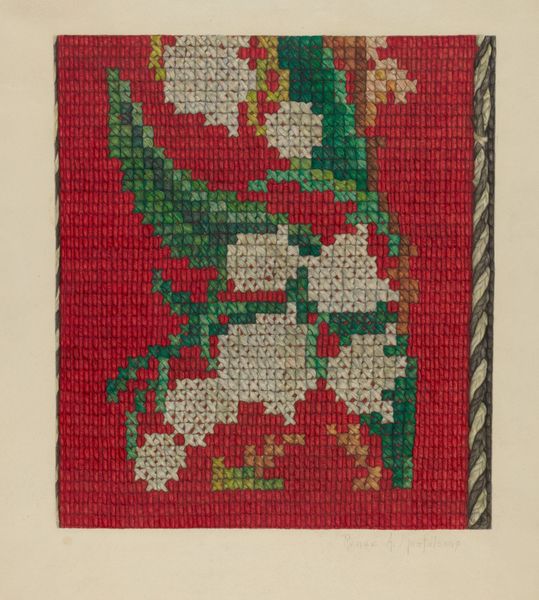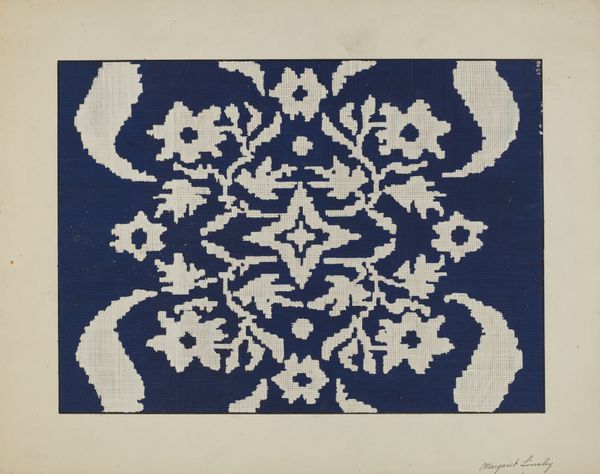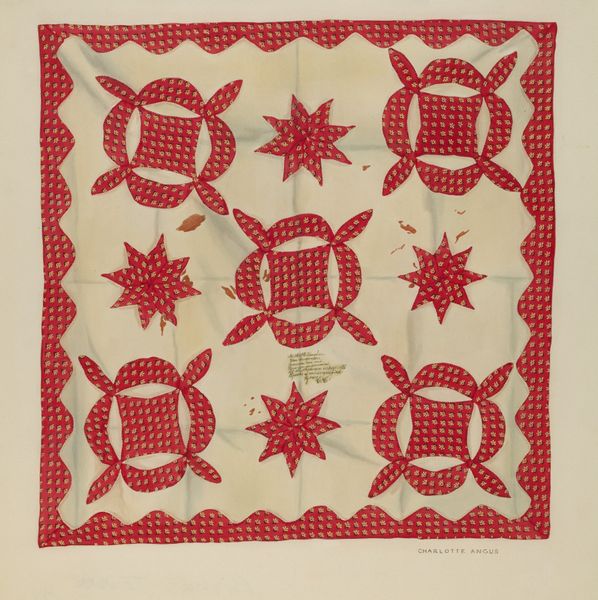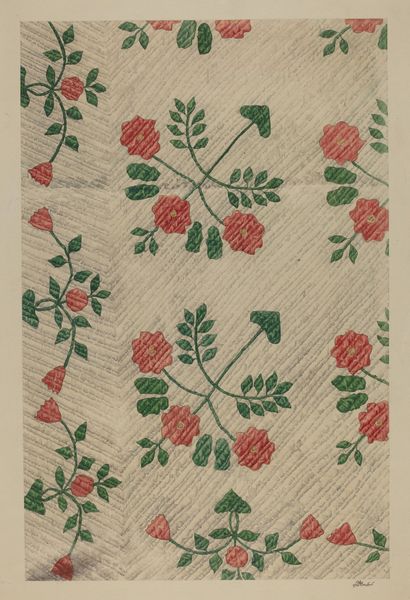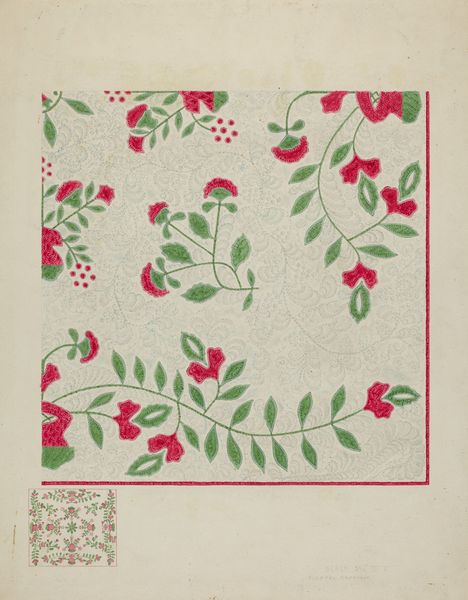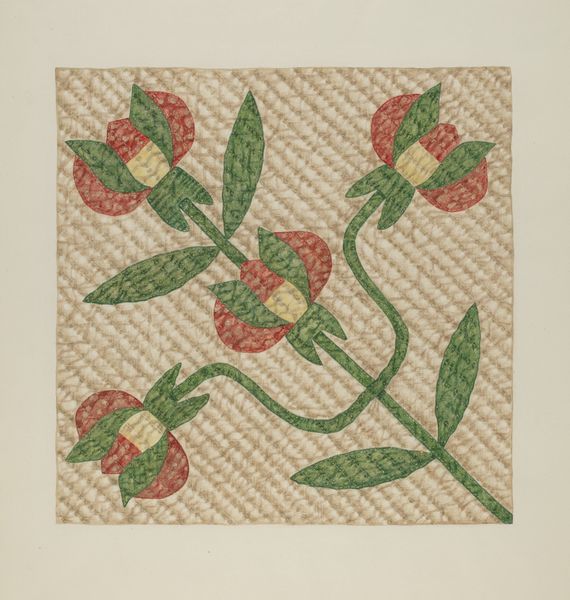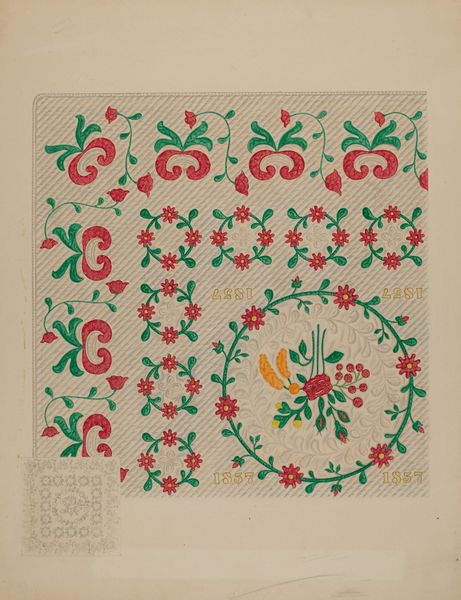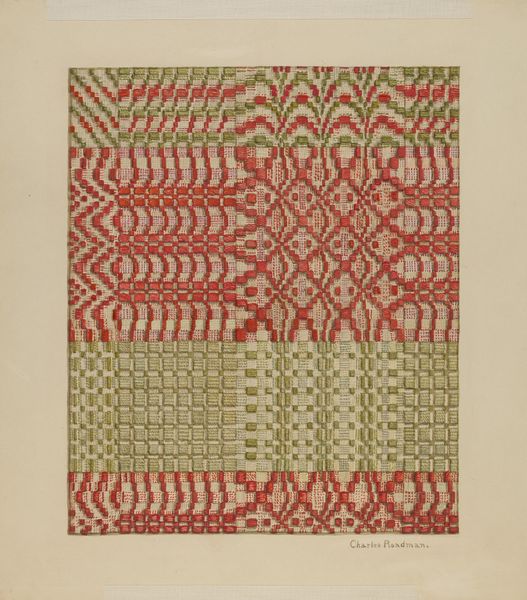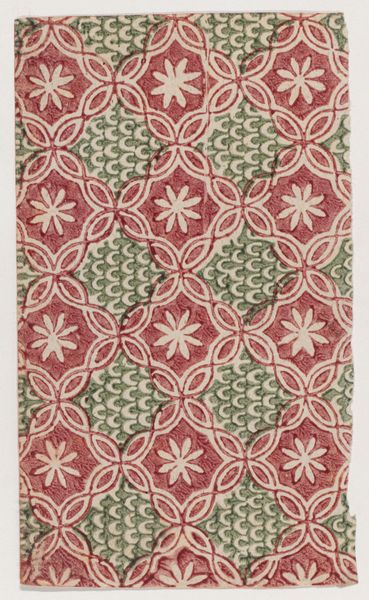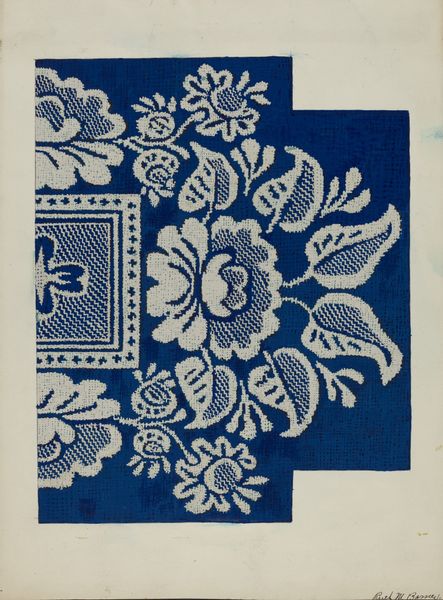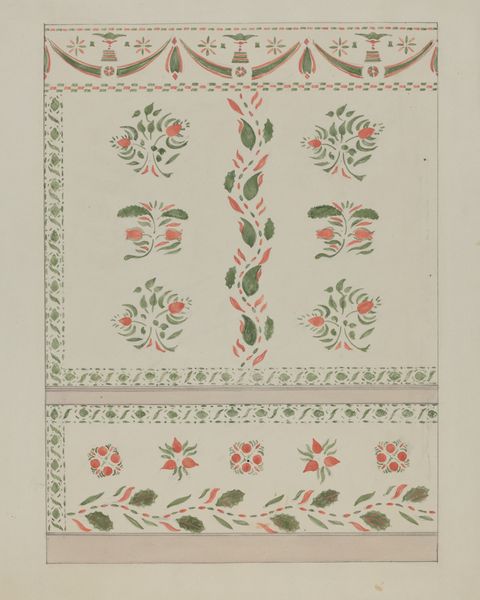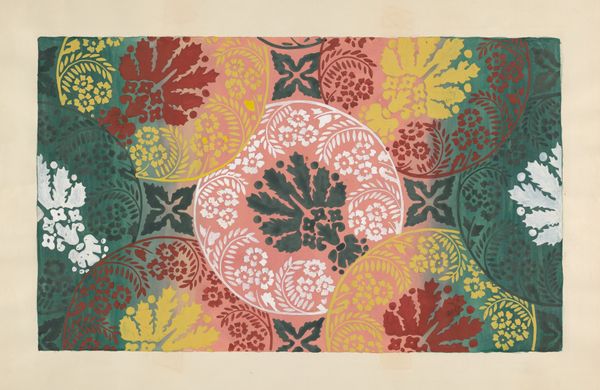
#
organic pattern
Dimensions: overall: 35.6 x 28.1 cm (14 x 11 1/16 in.)
Copyright: National Gallery of Art: CC0 1.0
Curator: We’re looking at a charming coverlet woven from wool, dating back to around 1937. Editor: My first impression? It's like a folk dream! I feel a story bubbling up. The texture feels both cozy and kind of…determined, you know? It is visually super neat in its execution and quite vibrant for an older piece. Curator: Textiles like this hold profound cultural weight. For many communities, weaving wasn't just a craft; it was a critical economic activity, a social act, and a form of storytelling and often served as critical political messaging. How do you see its possible functions, artistically, personally? Editor: Oh, definitely storytelling. Look at how that central floral pattern anchors everything, like a gentle but strong heartbeat. And the creatures almost like stylized bunnies flanking it make me feel the pulse and rhythm to the whole thing...it’s like finding your rhythm in this mad world through simple beauty. Curator: Exactly! The patterns and repetitions tap into art movements such as the Pattern and Decoration movement, underscoring the politics around decoration itself and opening up critical feminist space and commentary that refutes hierarchies in art. The use of repeated organic motifs emphasizes both beauty and the domestic. The drawing serves both functional and symbolic purpose. Editor: So true, those colours! Hot pink against the muted olive is almost an insistence of hope—it makes me think about resourcefulness, resilience. The overall construction shows so much love and consideration in construction and choice of theme, I am wondering if there is some direct commentary through colour, form, or utility regarding its sociohistorical context. Curator: Considering it's from the late 1930s, the time of the Great Depression, that resourcefulness could represent survival. And these objects offer powerful counter-narratives when considering histories related to the construction of class and domesticity. It isn't JUST folksy—it speaks to cultural agency and political endurance. Editor: You’re right, there’s such defiance here, such joy despite it all, you know? You feel the hand that made it, the heart that chose the colours and imagery and now more that ever I can only wish that more objects like this could "talk" to offer us context through creation and material choice...to reveal to us their stories. Curator: Beautifully put, these objects, especially ones tied to marginalized or diasporic narratives hold the power to reveal intimate political stories when examined. Editor: Thank you for enriching my observation with some real food for thought. It gives the viewer much more to connect with.
Comments
No comments
Be the first to comment and join the conversation on the ultimate creative platform.
